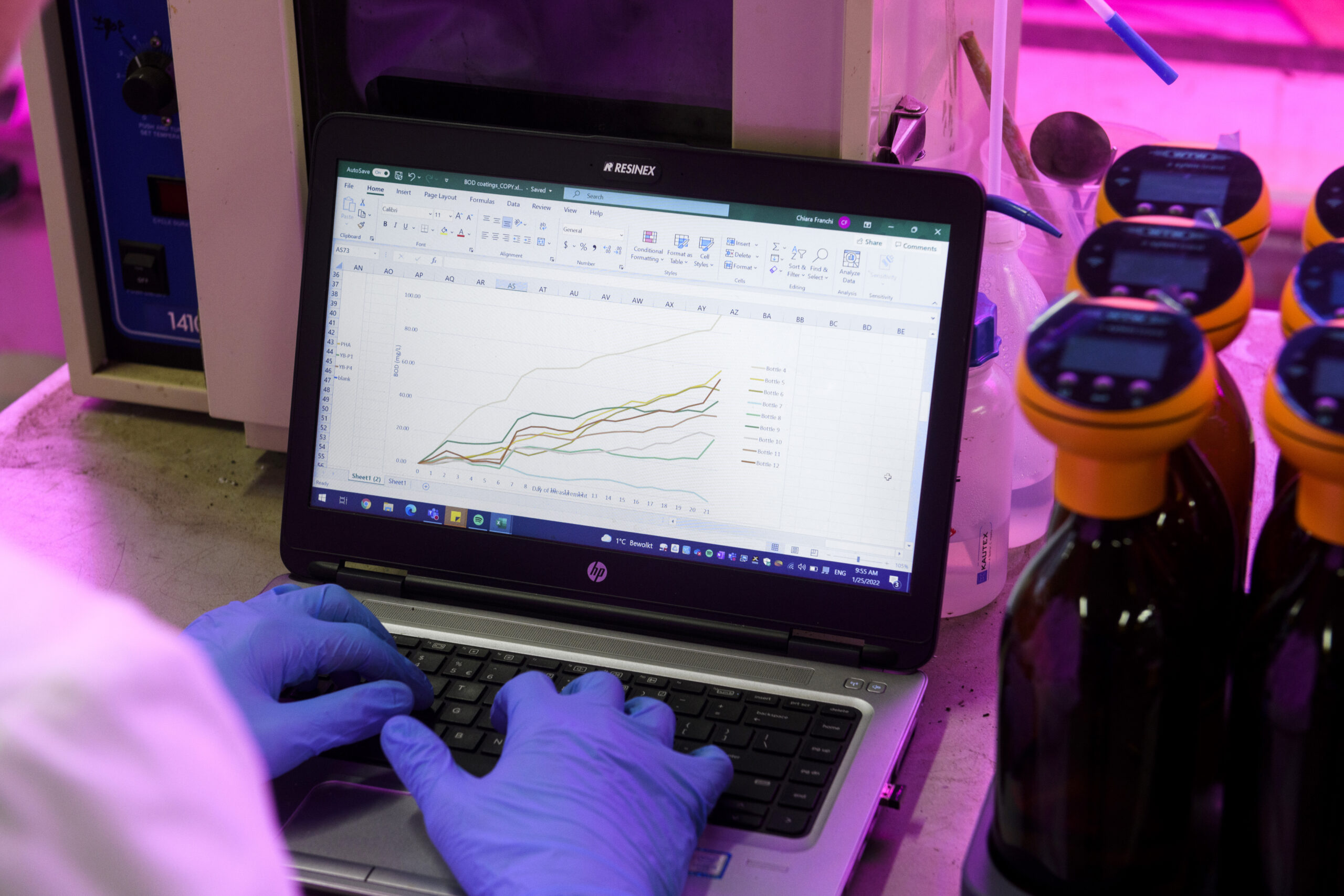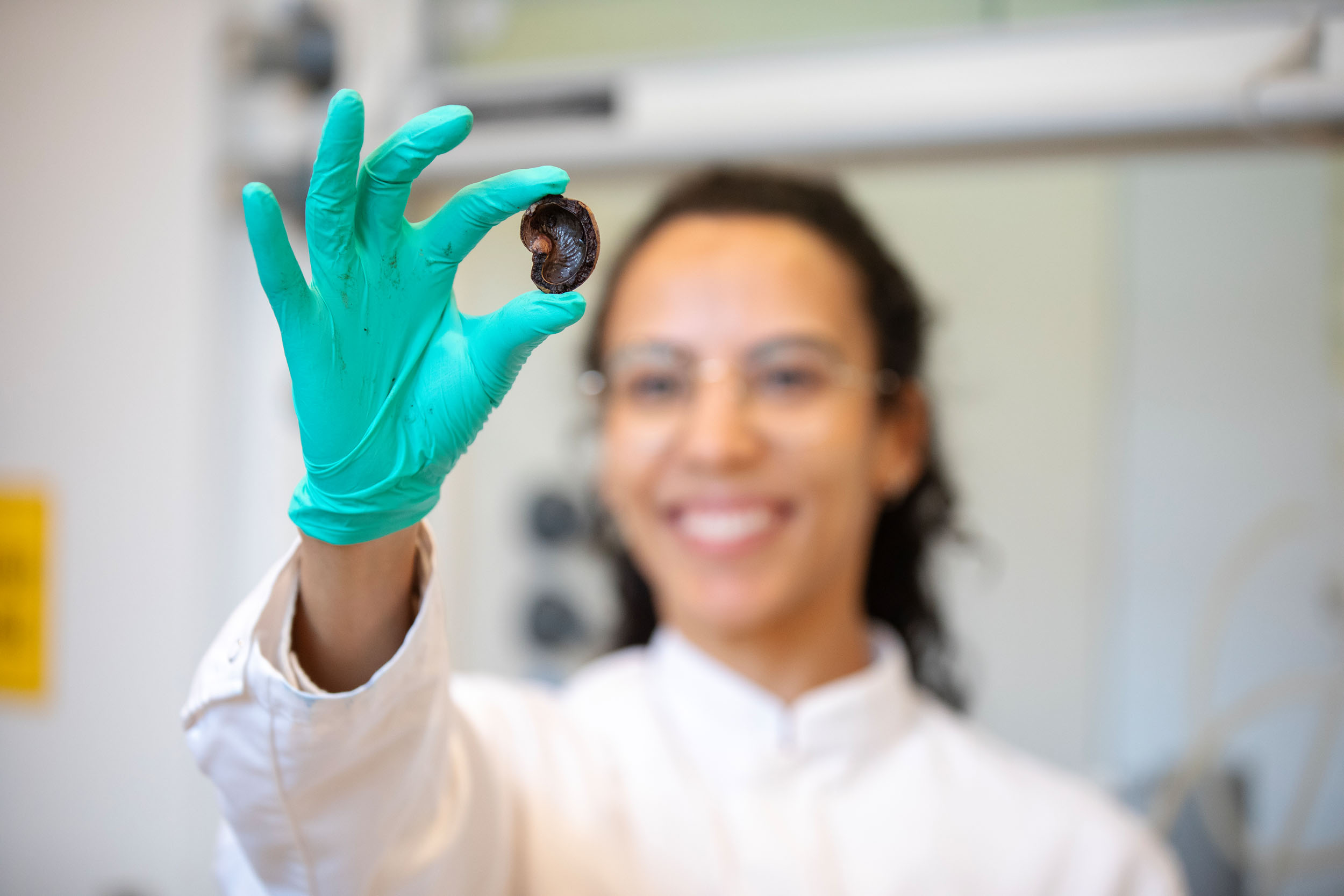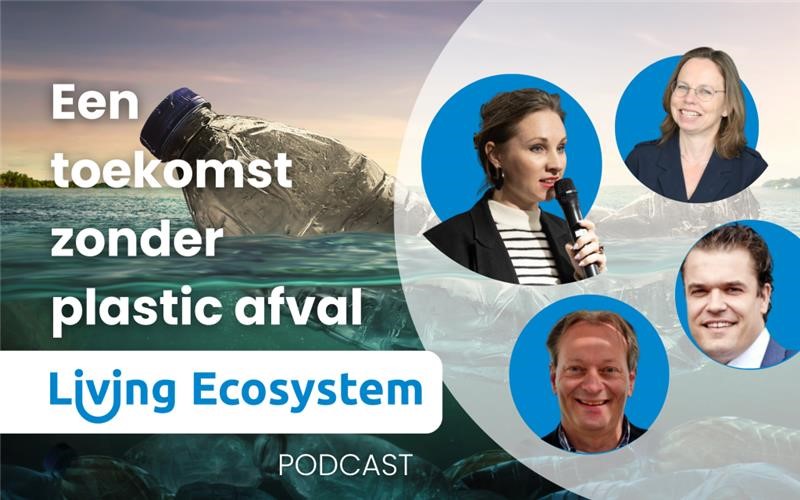Conventional concrete consists of a mixture of water, aggregate and cement. Cement in particular has a major impact on the environment: with emissions of 5 to 8 percent of total global CO₂ emissions, the cement sector is even one of the most polluting industries. Various research groups are working on more sustainable forms of cement.
In the MycoClay project, Avans University of Applied Sciences is conducting a feasibility study into concrete based on clay and mycelium. Project leader Neha John: “We are investigating which composition and treatment leads to a product that has similar properties to the concrete as it is being applied nowadays by contractors throughout the world. Once we have an idea of that, we will also map the economic feasibility, the sustainability effects and determine the embodied carbon emissions.”
Neha is working on the project with her colleagues Fran Ortega Exposito and Marianna Ansiliero de Oliveira Coelho. Fran about the idea behind the new type of concrete: “Clay has fantastic properties for construction, but it lacks long-term durability against water. By letting mycelium grow through the clay, you add a binder and you should obtain that added resistance and strength. So you no longer need cement and that gives you a significant sustainability advantage.”
Marianna: “A second sustainability advantage lies in the circular nature of MycoClay. After demolition, you can let the material fall apart again and possibly reuse it. With traditional concrete, that is not possible and you can only reuse it for low-value applications.”







